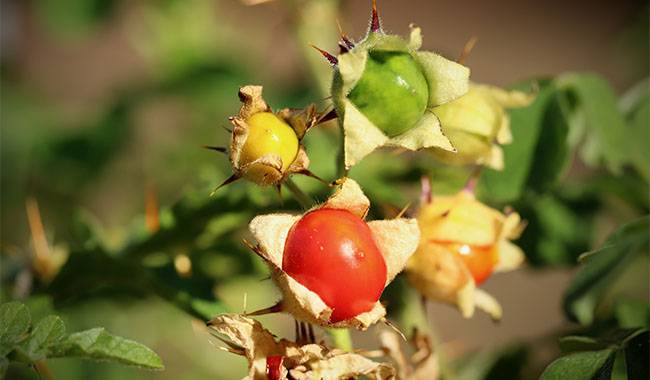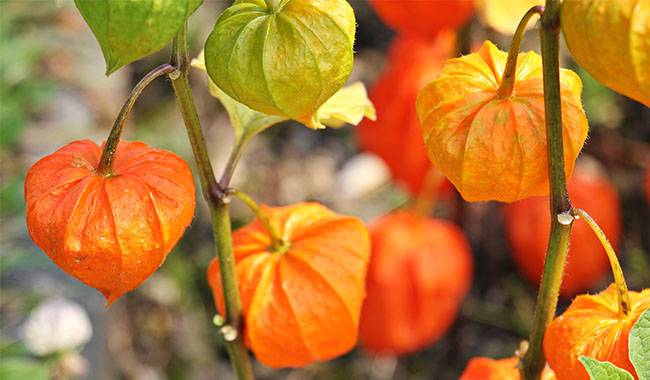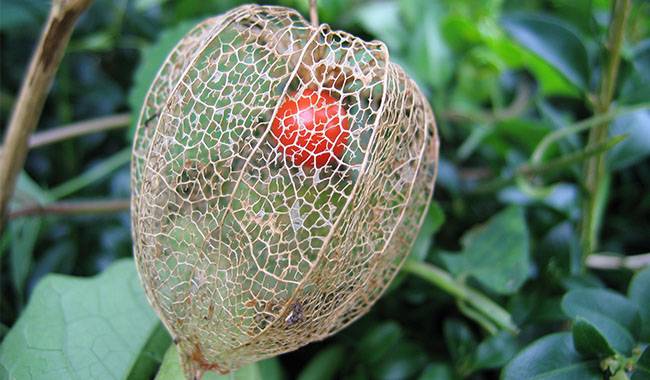
Among the fruit-bearing houseplants, few can boast the brightness of Nightshade. The large globular berries change color as they ripen, like artificial beads on a shrub. Miniature Nightshade is one of the most interesting and neat houseplants. Unfortunately, you can only keep the fruit in cool conditions for a long time. This plant is very demanding in terms of temperature but will respond to the right care by bearing fruit in abundance. You will learn How to Grow and Care for Nightshade (Solanaceae) Plants at Home in the ThumbGarden article.
DESCRIPTION OF THE NIGHTSHADE PLANT INDOORS
The common name for this Nightshade is “Solanaceae” or “ornamental tomato”. Although poisonous, it is a very popular indoor plant among Nightshade plants.
Indoor Nightshade is a compact plant, but only by special pruning. the average height of Nightshade is about 12 inches (30 cm). A straight trunk that gradually becomes woodier, with dense branches forming a matted canopy.
Nightshade’s leaves are short-stalked, lanceolate, slightly wavy-edged, and solid. They are a dark grayish-green color and appear dense and neat. The shapeless surface of the leaves provides a strikingly beautiful backdrop for the glossy fruit.
Nightshade’s flowers are generally inconspicuous. The pale yellow or white star-shaped flowers bloom as sparse or single florets that are quickly replaced by the fruit. The plant requires hand pollination. The almost perfectly round berries are quite large – up to 0.6 inches (1.5 cm) – and change color as they ripen, from green to increasingly yellow, orange, and red, with a coral scent. Thanks to its special waxy coating, Nightshade’s fruits shine like Christmas decorations.
Nightshade’s fruiting period lasts from early fall through winter, and the berries can last for months without wilting or falling off during the winter. Nightshade most often blooms in the summer, but they are now produced at atypical times, and gorgeous, berry-filled bushes can be found for sale at any time of year.
Although Nightshade “crops” are visually appealing, tasting their fruit is strictly forbidden. They are poisonous fruits that can cause severe poisoning even in small quantities.
TYPES OF INDOOR NIGHTSHADE PLANTS

The most common Nightshade (Solanum pseudocapsicum) is grown indoors. It is an herbaceous perennial that, when properly shaped, looks like a compact, densely branched bush with brightly scattered fruit.
Its two-color ornamental form (Solanum pseudocapsicum var. diflorum) was formerly distributed as Solanum capsicastrum. It has become the basis for many species with variegated colors.
GROWING CONDITIONS OF NIGHTSHADE PLANTS
Nightshade is one of the fastest-growing plants and needs to be replaced regularly. Repeat flowering and fruiting can only be achieved if it is kept cool, regularly pruned, and given a good supply of nutrients. Light is essential for flowering and fruiting.
Lighting and placement
Nightshade is very light-loving and is best placed on a windowsill only. Nightshade needs a sunny spot for enviably prolific fruiting, but protect it from the harsh midday sun. Eastern and western windowsills are ideal for this plant.
In winter, the lack of light must be compensated for by shifting to a southern window or by supplemental lighting.
Temperature control and ventilation
It is impossible to grow Nightshade without lowering the temperature during fruiting – the fruit will last long only if the temperature is below 64 °F (18 °C). From November to the end of February, it is best to keep the bushes at 41-50 °F (5-10 °C) with a maximum tolerance of 50-59 °F (10-15 °C).
Without a cold overwinter, Nightshade will not flower again and will not bear fruit. In early spring or February, put the plants back to room temperature immediately after transplanting. But even in summer, it is best to protect Nightshade from the heat by limiting the maximum temperature to 68-77 °F (20-25 °C). The shrub’s beauty and abundant fruit will only benefit from the difference in temperature between day and night.
Nightshade likes fresh air and is best moved to the garden or balcony in summer. When indoors, especially in the cooler months of fall and winter, the plant should be protected from light wind blows.
TAKING CARE OF NIGHTSHADE PLANTS AT HOME

Nightshade does not like irrigation interruptions and needs a lot of fertilization to grow, flower, and fruit. The main secret to compactness is a combination of several types of pruning.
Watering and air humidity
Nightshade’s moisture-loving nature often discourages even lovers of colorful exotic species. An overly dry substrate should not be allowed to dry out. Even during cold dormant periods, the substrate should be kept as moist as possible. Water during active growth in the spring and summer, allowing only the top few inches of soil to dry out. Reduce watering in the fall so that the substrate dries out twice as much.
Nightshade plants prefer high air humidity. Spraying foliage is best included in regular maintenance, but if values fall below 60%, at least a simple humidifier should be installed – a tray of wet moss or expanded clay soil.
Fertilizer and fertilizer composition
Nightshade needs highly nutritious soil in order to produce abundant fruit. The plant consumes resources from the substrate fairly quickly and requires frequent and regular feeding – every 7-10 days during active vegetation and flowering. After fruit formation, the frequency is reduced to once every 3-4 weeks. During the dormant period, nutrition stops completely and is resumed after pruning and replanting when active growth begins.
For Nightshade, you can use all-purpose fertilizers, fertilizers for tomato or fruit plants, or even fertilizers for flowering crops.
Pruning and shaping Nightshade
Without pruning, plants not only fail to develop a nice, squat, lush shape, but they quickly lose their ornamental appeal and need to be replaced more often with younger seedlings. Nightshade requires two types of pruning.
- Spring pruning, done at the end of the dormant period, severely shortens all shoots and encourages rejuvenation (standard pruning is 1/3 of the branch length).
- Periodically, in the form of pruning the tips of shoots to stimulate tillering.
Hygienic cleaning should not be neglected either. It is best to cut off wilted leaves and shoots from the shrub immediately.
Transplanting, containers, and substrates
Unlike most houseplants, Nightshade prefers a fairly heavy clay soil to which inert additives – vermiculite, perlite, fine clay, coarse sand – are added to increase permeability. Plants Nightshade can also be grown in any general-purpose substrate with a neutral response. The nutrient content must be high.
For this berry plant, use small, not too deep containers with good drainage holes. Ceramic is preferred.
Replant pseudo berry plants each year after early spring pruning. The rhizomes should be carefully transferred, removing only the loose soil from the edges of the root ball and keeping it submerged at the same level. Place a high drainage layer (at least 1/3 of the pot height) at the bottom of the pot.
PROBLEMS WITH GROWING INDOOR NIGHTSHADE PLANTS
Nightshade plants rarely get sick, but if not well cared for and placed outdoors, they will attract pests. Whiteflies, aphids, and spider mites are very fond of Nightshade plants. It is best to control pests on the plant immediately with an insecticide – delay can quickly lead to a complete loss of ornamental value.
Nightshade “signals” through its leaves that it lacks light or watering. Its leaves will curl in direct sunlight, fall off in the absence of light, and turn yellow and shrivel in drought or over-watering.
Propagation Nightshade
Nightshade is easy to grow and its seeds are sown with annuals, lightly covered with sand on the surface, and placed under glass or film. Young plants are placed in the brightest possible light and picked after a few true leaves have emerged, and then replaced with permanent pots when they reach about 6 inches (15 cm) tall. It is very important to start pruning as early as possible.
Nightshade can also be propagated by cuttings, where pruned, unfruitful shoots or semi-woody summer shoots are rooted under the canopy in light, slightly moist soil.







